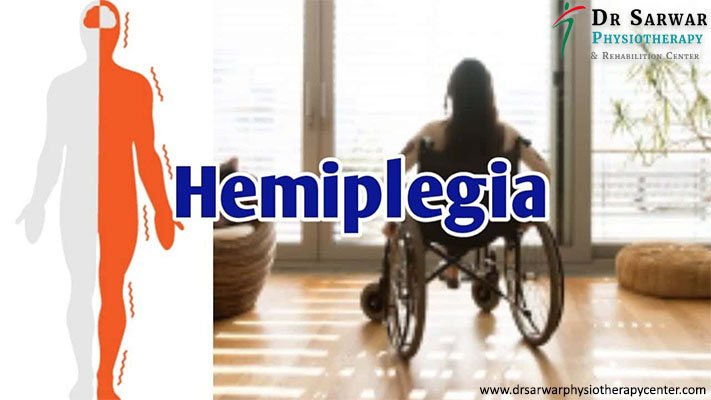At Dr Sarwar Physiotherapy Centre in Dwarka we have great physiotherapists who have worked for years with patients with hemiplegia, noting a great improvement in their disease.
If you, or someone you know or a family member, suffers from hemiplegia, do not hesitate to contact physiotherapist in Dwarka, and without any commitment on your part, we will inform you of everything we can do so that person can recover their functionality.
What is Hemiplegia?
Hemiplegia is the paralysis of one side of the body after a brain or spinal injury, such as a stroke or caused by trauma. When there is a decrease in strength or partial paralysis, it is usually referred to as hemiparesis.
If hemiplegia is caused by damage to the left part of the brain, it is the right half of the body that will be affected. If, on the other hand, the right part of the brain is damaged, the left half of the body will be affected.
Symptoms
These patients have an inability or deficit to move the affected side, which causes:
- Rigidity.
- Difficulty walking, or walking in a coordinated way.
- Balance problems.
- Impossibility or difficulty in picking up and holding objects, as well as making precise movements.
Stages
The hemiplegic patient normally goes through three phases:
Acute or stroke phase: this is the most critical phase, as soon as the stroke occurs. The main objective is the medical stabilization of the person. Nowadays, there are specialized stroke units in many hospitals, which carry out the most immediate treatment.
Sometimes, the cerebrovascular accident does not take place suddenly, but there are some previous signs such as vision problems, speech problems, changes in behavior, headaches or dizziness, among others. If these patients come to the hospital early, it can be detected without the most acute phase taking place.
Stabilization phase: in it the patient, who has come out of the stroke phase, shows signs of confusion and disorientation in space-time. This is also where alterations in language are appreciated, if any, especially if the affectation has been on the left side of the brain.
Recovery phase: in this stage the patient evolves towards an improvement.
After the most acute phase, during the stabilization and recovery phases, hemiplegia goes through two phases:
- Flaccid phase: in it the patient cannot move the damaged side, tends not to use it due to decreased sensitivity and awareness of it. In this first stage the passive movements of the joints are not limited.
- Spastic phase: progressively spasticity appears. This means that muscle tone increases greatly and steadily. This causes a fixed posture, which can make the joints stiffer. Normally, the arm tends to be close to the body, in internal rotation with flexion of the elbow, wrist and fingers. In the lower limb, both flexors and extensors are affected, which can make standing and walking possible.
Rehabilitation work with physiotherapy in Dwarka should be as early as possible, starting once the patient is in the stabilization phase. The first six months after the damage occurs, the brain has a greater capacity for recovery, but in more advanced stages the patient will also be able to continue to progress in their recovery thanks to plasticity.
In this type of pathology of neurological origin, it is important, in the early stages, to maintain mobility to avoid incorrect postures or deformities. In successive phases of treatment, our goal will be mainly to improve mobility and increase the patient’s independence.
